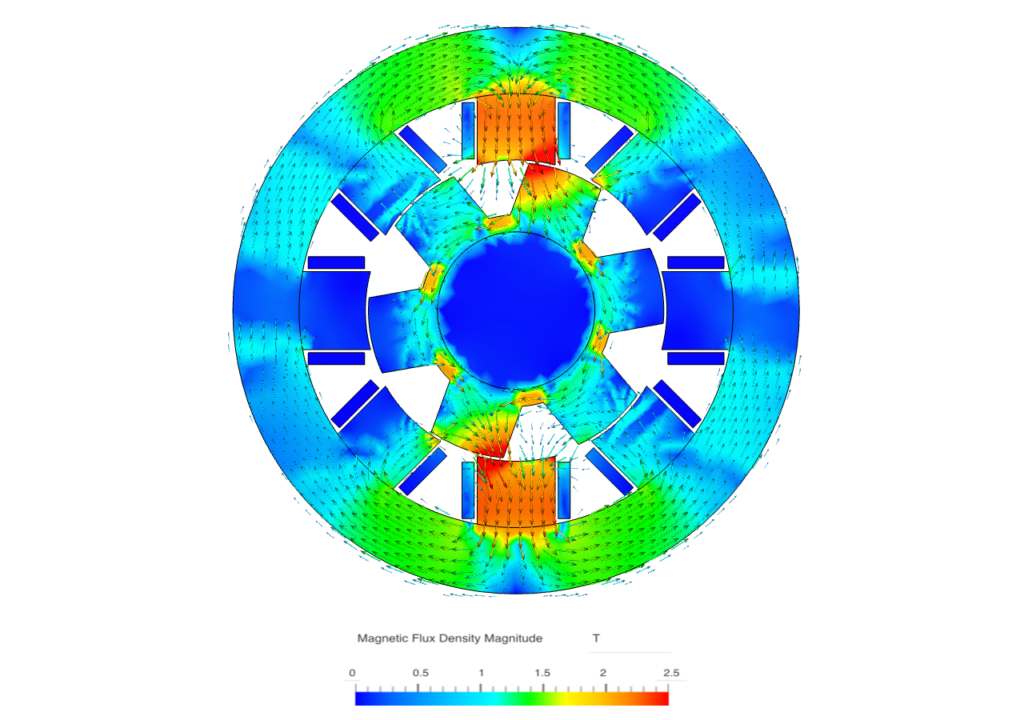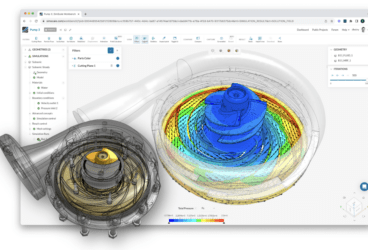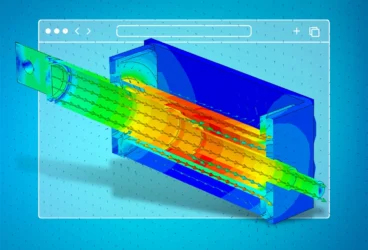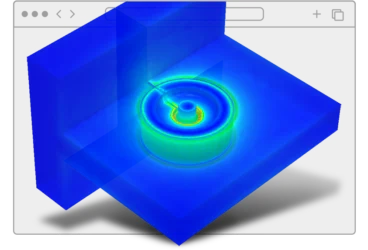What is a Switched Reluctance Motor?
Switched Reluctance Motor (SRM) is a type of electric motor characterized by its simple and robust design. As its name suggests, it operates based on reluctance torque rather than electromagnetic torque.
The term “switched” refers to the motor’s reliance on power-switching transistors for its operation. It consists of a stator with multiple salient poles equipped with coils and a rotor made of ferromagnetic material with no windings or permanent magnets. This offers several significant advantages, particularly in terms of mechanical simplicity, durability, cost, and performance.
The term “reluctance” refers to the tendency of magnetic flux to follow the path of least resistance, just as electric current follows the path of least resistance. Ferromagnetic materials (like the iron in the SRM rotor) have high permeability, allowing the magnetic flux to pass through them easily compared to the air gap and other non-magnetic materials, thereby presenting low reluctance.
As the magnetic field is established, the rotor is attracted to a position where the magnetic circuit’s reluctance is minimized. This optimal position occurs when the rotor poles are aligned with the energized stator poles, as this alignment shortens the magnetic path and maximizes the cross-sectional area through which the magnetic flux can pass.
Due to their unique advantages, such as simplicity, robustness, cost-effectiveness, and high efficiency, SRMs are gaining importance across various industries. From automotive to home appliances, renewable energy, and medical devices, SRMs are becoming increasingly prominent. To meet the growing electrification demands in the automotive industry, particularly in EVs, SRMs offer a compelling alternative without relying on permanent magnets.
Advantages of SRMs in the Automotive Industry
The electric motor requires a high torque-to-power ratio, a characteristic typically fulfilled by permanent magnet motors. However, these magnets can be costly due to the rare earth materials involved, such as neodymium, dysprosium, and samarium.
To mitigate motor costs while maintaining performance, the SRM emerges as a favorable option for EV drives, particularly for long power range applications beyond the base speed. SRM drives offer several advantages for EVs, including:
- The absence of permanent magnets
- High fault tolerance
- Straightforward construction
- High efficiency during high-speed operations
Due to their more straightforward design compared to other motors, SRMs have fewer moving parts like brushes or permanent magnets. This simplicity enhances their ability to tolerate faults, making them more resilient to wear and tear, mechanical failures, and various operating conditions commonly faced in EVs.
Additionally, the straightforward construction of SRMs leads to easier manufacturing processes and fewer potential points of failure. This simplicity enhances reliability and reduces maintenance needs throughout the EV’s lifespan. For example, SRMs are increasingly used in electric vehicle propulsion systems due to their high efficiency, robustness, and ability to operate at high speeds, significantly enhancing vehicle performance and range.
In hybrid vehicles, SRMs contribute to better fuel economy and lower emissions through their efficient operation and reliable performance. SRMs can also power various auxiliary systems such as power steering, cooling pumps, and electric superchargers, providing reliable and efficient performance.
Challenges of Switched Reluctance Motors
Despite their numerous advantages, SRMs also face several challenges and limitations, particularly in automotive applications, such as:
- Torque Generation Mechanisms: This phenomenon, known as the torque ripple, can lead to vibrations, heightened noise levels, and possible mechanical stresses, often necessitating supplementary control measures for mitigation.
- Efficiency at High Speeds: SRMs may experience reduced efficiency at high speeds due to increased eddy current losses and electromagnetic effects.
- Saturation Effects: Saturation effects can limit the operating range of SRMs, particularly in applications requiring high torque or high-speed operation.
Switched Reluctance Motor Simulation with SimScale
Utilizing cloud-native electromagnetics simulation offers a solution to address these challenges by providing insights into torque generation mechanisms, torque ripple effects, and motor efficiency across diverse operating conditions.
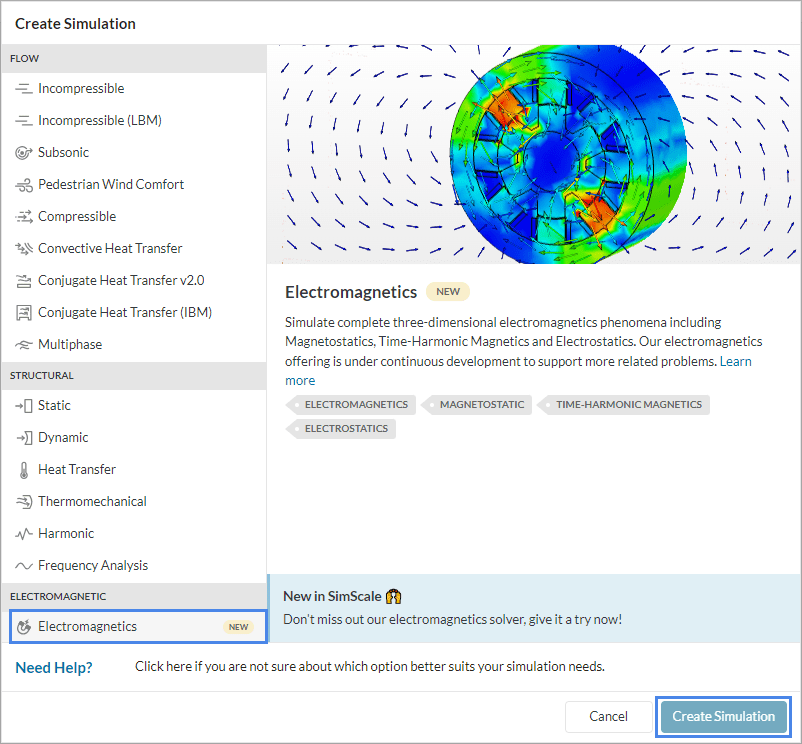
Optimization of Motor Components
- Stator and Rotor Geometries: Cloud-based simulation can model the magnetic fields and electromagnetic forces and help identify designs that maximize magnetic efficiency and torque while minimizing losses.
- Magnetic Material Selection: By simulating various magnetic material assignments, engineers can select those with the best performance characteristics, such as high permeability and low hysteresis losses.
- Optimal Winding Layout: Simulating different winding configurations helps in determining the optimal layout for maximizing torque and efficiency.
- Eddy Current Analysis: Time-Harmonic Magnetics simulations can model the effects of varying magnetic fields to observe the rise of eddy currents and their impact on efficiency.
- Loss Minimization: By understanding how eddy currents form and interact with the motor components, designs can be optimized to minimize these losses, often through material selection and geometric design tweaks.
- Frequency Effects: Simulating different operating frequencies helps in understanding their impact on eddy currents and overall motor efficiency, guiding the design of motors that operate efficiently across a range of conditions.
To learn more about cloud-native electromagnetics simulation, check out our Magnetostatics and Time-Harmonic Magnetics documentations.
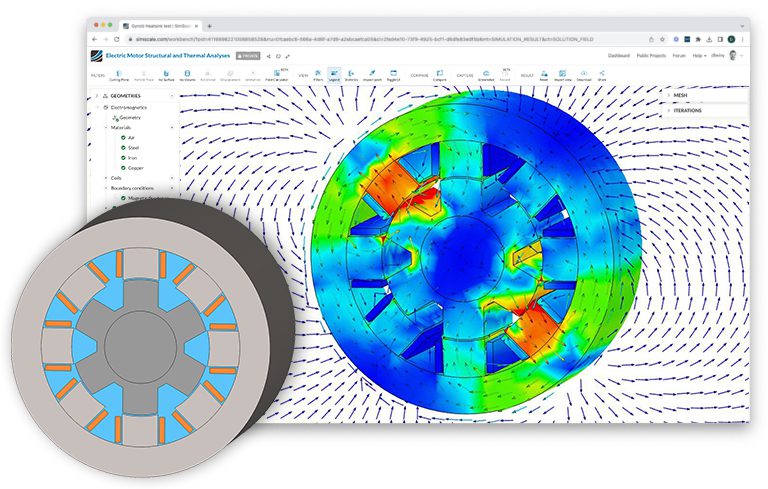
Future Trends and Opportunities for SRMs
Emerging trends in SRM technology are driving innovation across industries, resulting in motor solutions that are more efficient, reliable, and environmentally sustainable. The future of the SRMs market looks promising, with emerging trends that focus on sustainability and environmental impact, advanced control and sensing technologies, high-performance materials and design optimization, and more.
These emerging trends are indeed shaping the future of automotive engineering. Here are some examples:
- By accelerating the adoption of EVs, SRMs contribute to reducing greenhouse gas emissions and decreasing dependence on fossil fuels. This aligns with global efforts to combat climate change and promote sustainable transportation solutions.
- With advanced control and sensing technologies, real-time monitoring and diagnostics enable predictive maintenance, reducing downtime and ensuring vehicle reliability and safety.
- Advancements in material science and design optimization result in higher motor efficiency, increased power density, and improved thermal management capabilities, ultimately enhancing vehicle performance and range.
- Modular motor designs and scalable platforms offer flexibility to adapt motor configurations to meet specific vehicle needs, simplifying manufacturing and lowering development costs.
Start your Switched Reluctance Motor simulation in the cloud now by clicking the “Start Simulating” button below.
References
